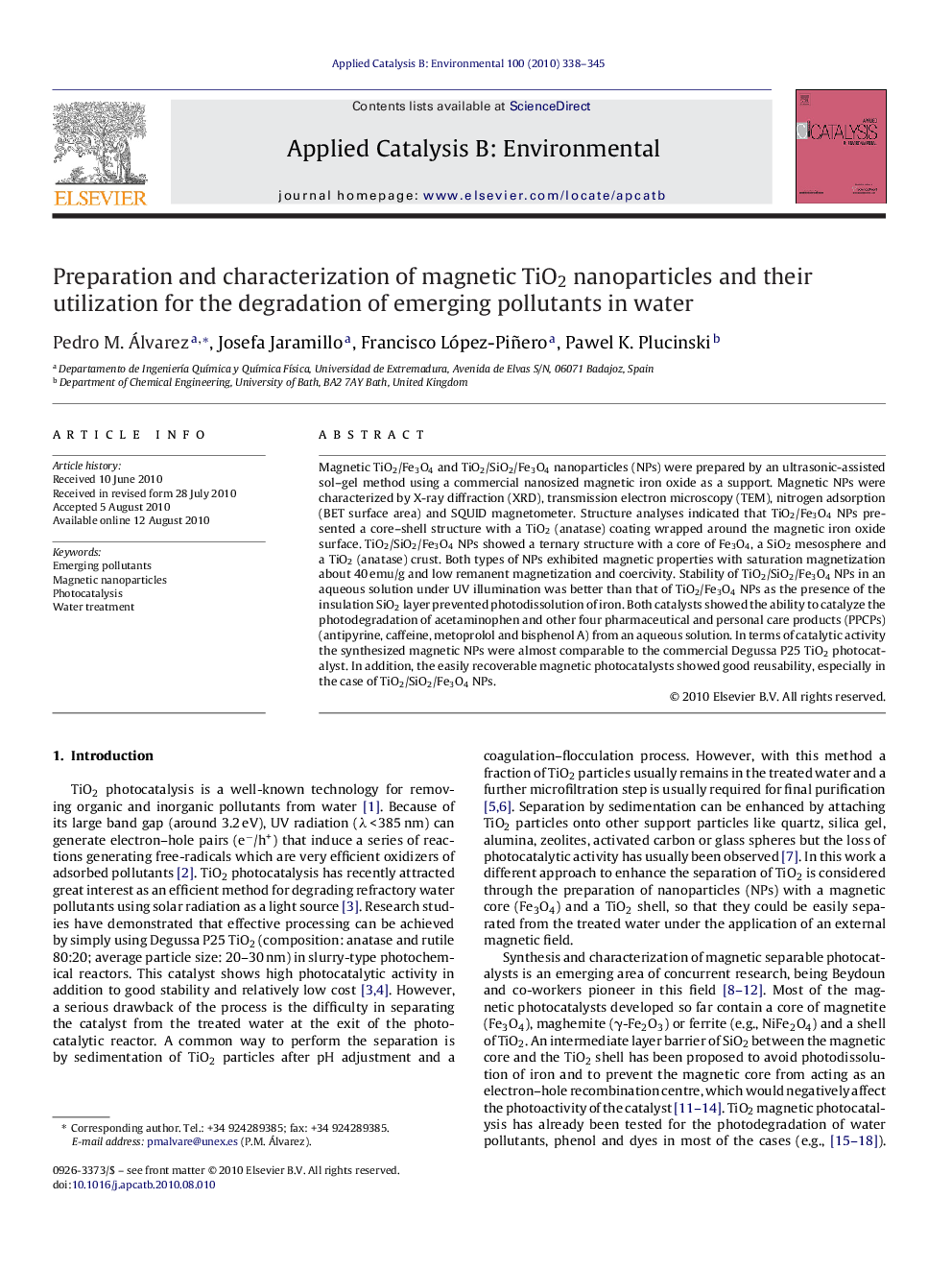| Article ID | Journal | Published Year | Pages | File Type |
|---|---|---|---|---|
| 47176 | Applied Catalysis B: Environmental | 2010 | 8 Pages |
Magnetic TiO2/Fe3O4 and TiO2/SiO2/Fe3O4 nanoparticles (NPs) were prepared by an ultrasonic-assisted sol–gel method using a commercial nanosized magnetic iron oxide as a support. Magnetic NPs were characterized by X-ray diffraction (XRD), transmission electron microscopy (TEM), nitrogen adsorption (BET surface area) and SQUID magnetometer. Structure analyses indicated that TiO2/Fe3O4 NPs presented a core–shell structure with a TiO2 (anatase) coating wrapped around the magnetic iron oxide surface. TiO2/SiO2/Fe3O4 NPs showed a ternary structure with a core of Fe3O4, a SiO2 mesosphere and a TiO2 (anatase) crust. Both types of NPs exhibited magnetic properties with saturation magnetization about 40 emu/g and low remanent magnetization and coercivity. Stability of TiO2/SiO2/Fe3O4 NPs in an aqueous solution under UV illumination was better than that of TiO2/Fe3O4 NPs as the presence of the insulation SiO2 layer prevented photodissolution of iron. Both catalysts showed the ability to catalyze the photodegradation of acetaminophen and other four pharmaceutical and personal care products (PPCPs) (antipyrine, caffeine, metoprolol and bisphenol A) from an aqueous solution. In terms of catalytic activity the synthesized magnetic NPs were almost comparable to the commercial Degussa P25 TiO2 photocatalyst. In addition, the easily recoverable magnetic photocatalysts showed good reusability, especially in the case of TiO2/SiO2/Fe3O4 NPs.
Graphical abstractFigure optionsDownload full-size imageDownload as PowerPoint slideResearch highlights▶ Core–shell magnetic TiO2 NPs were synthesized by a simple sol–gel method. ▶ Magnetic TiO2 NPs photocatalysed the degradation of some PPCPs in water. ▶ Magnetic TiO2/SiO2/Fe3O4 showed good stability and reusability.
